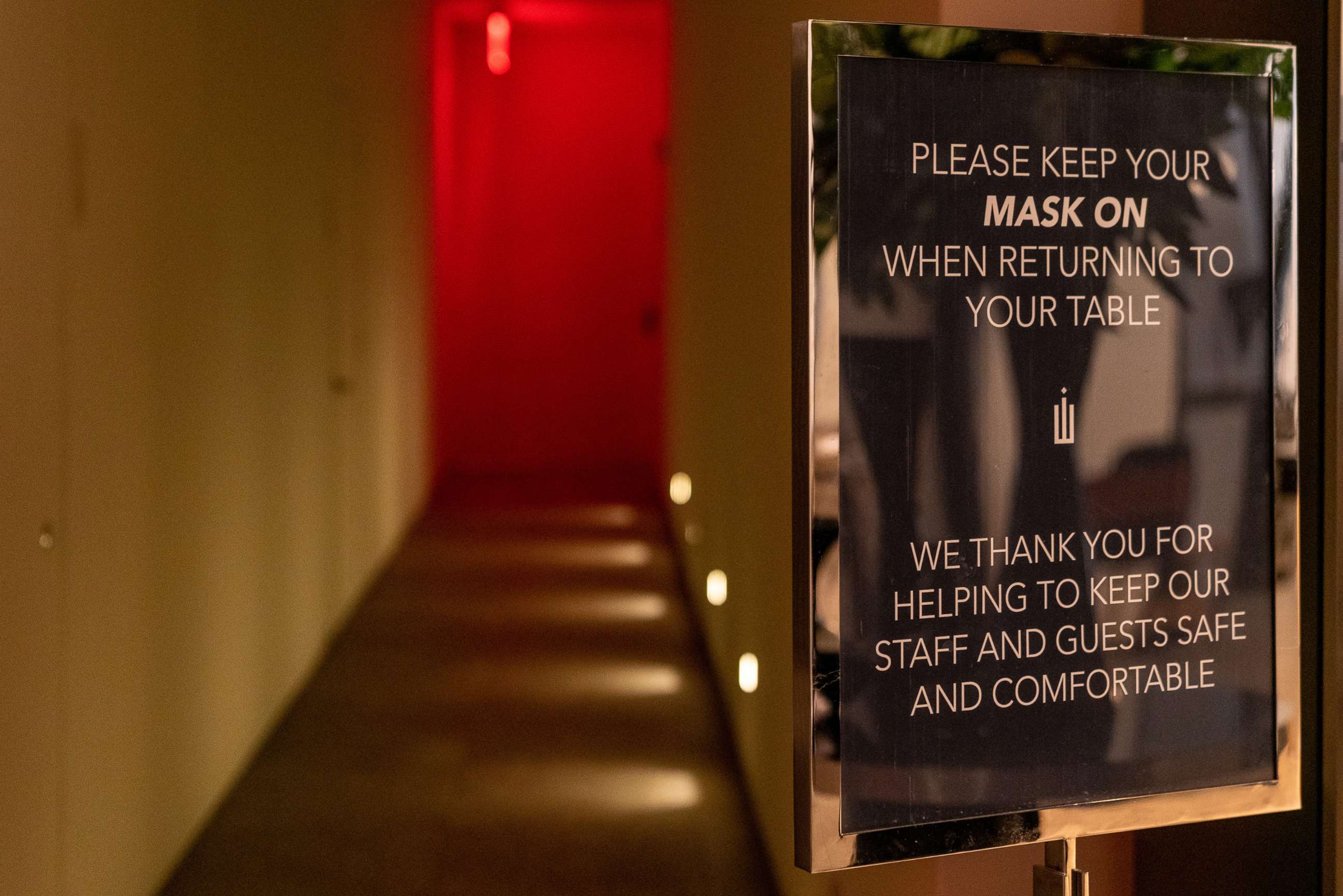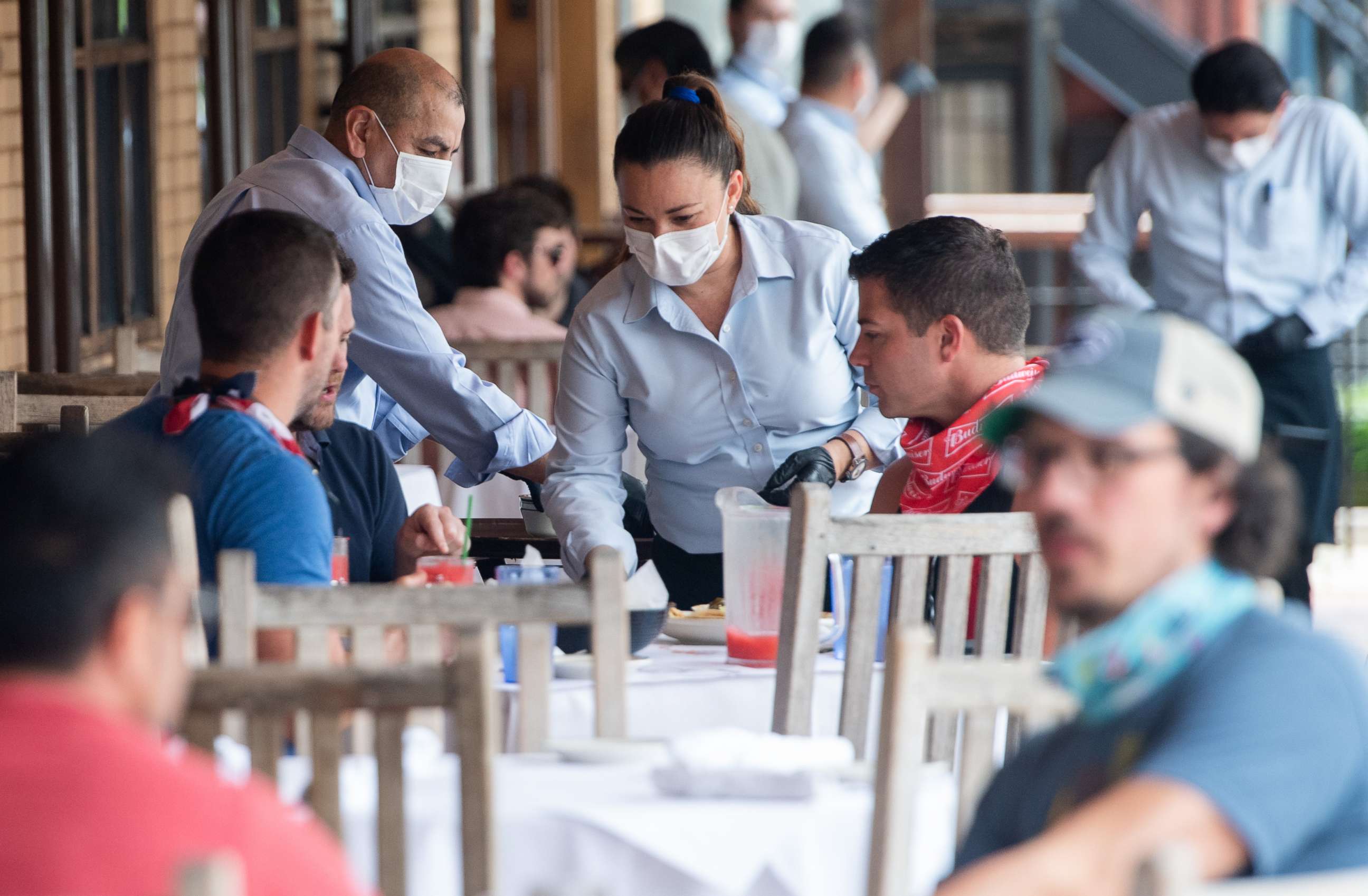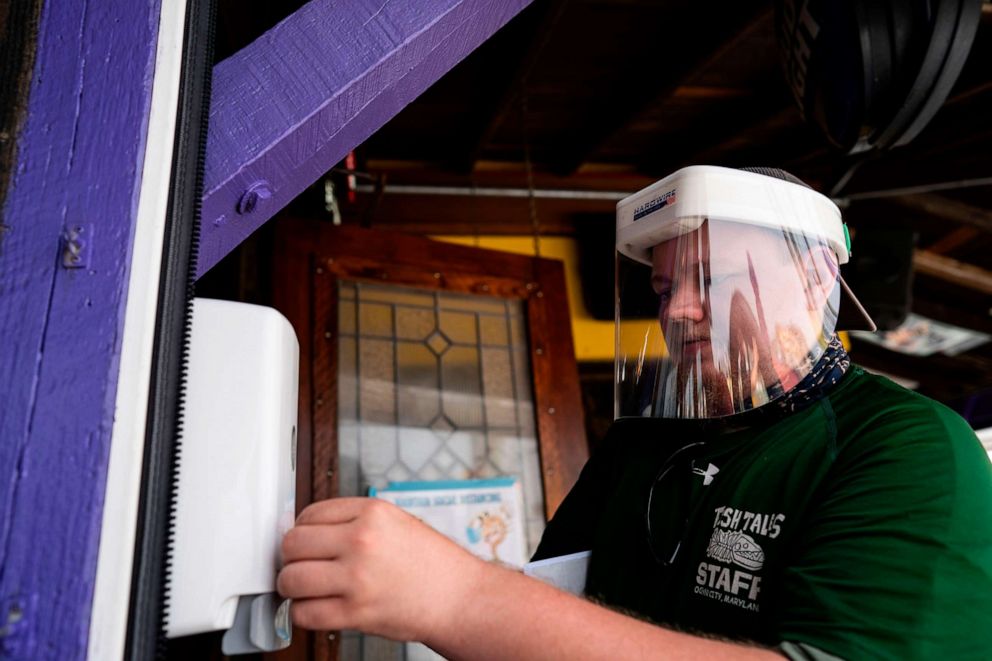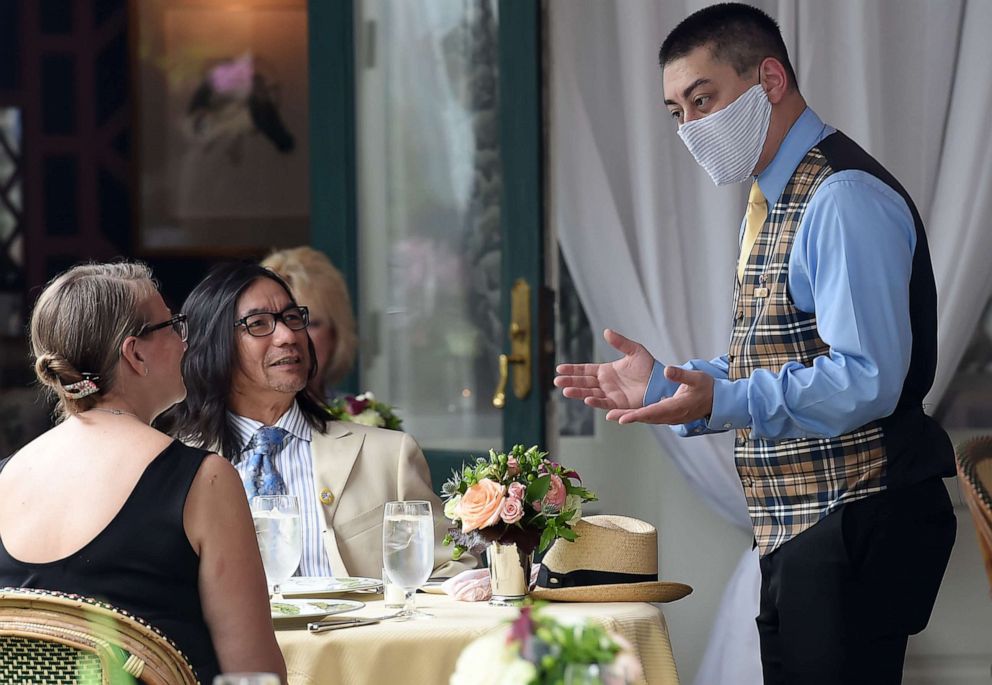How restaurants have worked smarter to make indoor dining safe, successful and palatable
Madre in Brooklyn has reinvented its menu, service interactions and more.
Restaurants across the country are reopening for indoor dining and for the first time in over six months New York City eateries can allow diners back inside at 25% maximum capacity, prompting the question on many peoples' minds: How are establishments working smarter to keep customers safe, happy and well-fed?
As an industry, restaurants have long been uniquely suited to safely and efficiently ensure guests can enjoy a comfortable dining experience. Even with the hurdles and constantly changing protocols of the coronavirus pandemic, restaurant owners, chefs and waitstaff have adapted to ensure that food handling, customer safety, service interactions, touchpoints and more meet and exceed expectations to retain trust among the diners who choose to come in for a meal.

Physical changes and safety protocols while still making diners feel welcome
For Brooklyn-based executive chef, Bryan Noury, the months in the making pivot has helped his contemporary American restaurant Madre add even more attention to details that keeps people coming back for the delicious updated menu, hospitality, and innovative marketplace offerings.
“From the operations side, everything we do is based around safety,” Noury told "Good Morning America." "The thing that’s really important for people to really understand these days is that in a high-end kitchen, we scrub and clean that space more than you clean your office desk. And I think that’s something that needs to come across as well."
He added that while the restaurant is lucky to have a good amount of frontage for outside service, there's a level of comfort for inside dining too. "Everything is spaced six-feet comfortably," he explained.
While mandatory measures like the volume of diners allowed inside a restaurant vary state by state and county by county, the industry has equipped itself with all the tools necessary to strictly follow and enforce safety guidelines set forth by the state. From 5-foot tall barriers in spaces where six-feet of distance between all sides of a table isn't possible, to quick response (QR) code menus and online ordering systems, restaurants have come up with solutions to mitigate possible risks while serving diners.
Kathy Holt, a consultant at JPG resources with decades of experience in restaurants and hospitality, explained to "GMA" that while her initial reaction was "shock that we shut down the industry overnight" she has been "exceedingly proud" of how dining has adapted to the challenges at hand.
"I think the industry has bent over backward and turned itself inside out to try to serve the diners and the patrons that it normally takes care of, in addition to being really aware of the communities they operate in," Holt said. "The deck still seems to be stacked against most restaurateurs -- but I believe that they are smart, their ability to pivot and they will find ways to be able to survive because it's about survival right now."
Holt believes there are a couple of key indicators that will help customers feel safe and welcome at restaurants, and it starts with "walking in the door."
"That moment is more pivotally important than ever -- to feel like the restaurant understands the safety guidelines and they're taking them seriously and I feel safe on-premise," she said. "To see that the staff has masks on and feel that things are distanced well -- but at the same time, it has to be inviting, because I am dining out and there's an experiential expectation. And that's a tough combination."

Restaurants in areas that have reopened for indoor dining, like in New York City, are required to implement staff and diner temperature checks and at least one person from each party must fill out a contact tracing form.
Check out the full list of indoor dining safety guidelines and requirements of New York City restaurant employees and patrons, here.
Optimizing technology to reduce contact and enhance customer experience

Noury's team has created a balanced and safe experience utilizing QR codes for people to peruse the menu and order directly from the waitstaff, which he said they are prepared to do once they welcome diners back inside for the first time on Wednesday, while still providing thoughtful service with great food.
"As far as service points, we've definitely made a conscious effort to reduce touches and change less between courses," which he said is a slightly foreign concept where waiters were used to resetting silverware and plates constantly between courses. "We also wanted to pick up the rate. If we're not gonna do as many table touches, it's actually going to move service along quite a bit, so if we can do 30% more because we're taking 30% less time, that's positive."
Holt said the QR code menus "also takes some of the burdens from the waitstaff" which is crucial for restaurants in cities like New York where re-opening service at 25% means "you can't bring on the normal level of staff."
"Your staff might be asked to wear more hats because the finances right now are very out of whack for any restaurateur -- your patron load is going to be 25% of what it was -- so the math is going to be very complicated," she said. "The more you can leverage technology and other ways to interact with your customers that make them feel safe -- it will give [restaurants] a leg up."
Additionally, she said QR codes give restaurants the ability to get more patron information and allow for new interactions and potentially implement services like loyalty programs.

"I think if you're upfront and honest about it through marketing" when it comes to reservation policies and seating time limits, "people need to be cool with it," Noury said.
Holt suggested that restaurants get opinions from customers they've known and seen for years.

"I think it's OK to collaborate and engage your frequent diners so they know how much you care about it and they feel more comfortable having those conversations," she said. "Communicating with the people who regularly dine in your restaurant about what you're doing for safety, about how long you've been COVID free."
Adjusting ingredients, menus and operations to serve restaurant-quality meals to-go
Because not everyone will be immediately comfortable going back indoors, many restaurants around the U.S. have reinvented takeout options, down to the containers they serve it in and the ingredients used in the dishes they now offer.
"I think you really need to examine your menu and examine how many items you can offer," Holt explained. "You're going to try to utilize your ingredients in as many different spots of the menu as possible so you can be efficient in your procurement."

At Madre, the reimagined menu that Noury spent four months adapting has been a huge success. "When we look at our menu down the line we're so proud of every dish, there's no holes and the feedback's never been better," he said. "It's awesome."
One of Madre's best-selling dishes, an eggplant filled agnolotti pasta with black tahini, tomato bechamel, parmesan foam and topped with rosemary crumble -- while "really beautiful" he acknowledged that "because it doesn't travel well" they now sell it fresh and individually portioned for a cook-at-home version.
"When we walked back into the space I was like, 'listen we can’t really afford to buy anything, our startup cost has to be close to zero, we don’t know what the winter is going to be like," Noury said of the decision to reverse engineer the menu. "You really have this kind of Cub Scout kind of mentality -- I literally was like whatever we have down here is what we’re starting the menu with and it’s actually inspired a lot of really great dishes."
Noury continued, "We built the menu not only around the food stores that we already had and what would travel and deliver, but what would sell."
Like many restaurants adapting to diners who wish to cook up the restaurant-worthy food in their home kitchens, Madre pivoted to establish an online marketplace with kits of everything from specialty brunch favorites like pancake batter and French toast ingredients to various tomato-based pasta sauces, quarts of stock to use at home and prepackaging specific dishes to create a 360-degree service.
"I feel like they're doing a good job beginning to whittle down their menu and hone in on what they do well," Holt said of restaurants in big cities making these changes. "I think there's still opportunity in figuring out if there's a way to profitably get a share in the dining away opportunity and what does that experience look like."
While there are sure to be more uncertainties for restaurants in the months ahead, Noury explained that despite concerns for the winter, Madre's goal is to keep people employed and create an oasis for diners seeking a sense of normalcy through hospitality.
"Our guest experience is to give people a sort of step into a snow globe for just a few minutes," he said. "I think that’s the most important thing because it’s the one thing we need as a race of humans, we’re social people."
"I hope we come out on the other side a little better, a little more empathetic," Noury said of the monumental efforts restaurant staffs across the board have put into making the dining public feel welcome and safe. "We really hope that customers and clientele and just people, in general, continue to support that."




